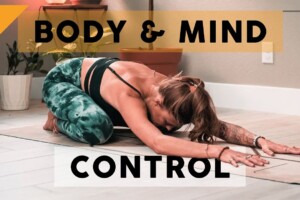
There are many ways to meditate. You can sit in silence or do meditation exercises. Either way, the key is to get into a habit of regular, mindful movement. When you become more aware of your breath, you will learn to relax and calm your mind. This will enable you to have more energy and focus during your day.
Sitting meditation
When you meditate, you can learn to focus and improve your mental clarity. You can also decrease your anxiety. This practice can improve your self-esteem and help you make good decisions.
A five-minute morning meditation can have many benefits. It is an easy way to start your day. The practice can also help you sleep better.
Morning meditation can help you reduce stress, improve your mental health, and boost your productivity. To do this, you will need to get a consistent practice in place.
The first step is to sit comfortably. Make sure your feet are flat on the floor and your head is aligned with your spine. For a more relaxing experience, you may want to use a cushion that tilts your hips forward.
After you have established your sitting position, you can begin your meditation. Breathe deeply and concentrate on your breath. If you are able to, you might even want to count your breath.
Combining yoga with mindfulness
Yoga and mindfulness can be a wonderful combination. They are both mind-body practices that have been proven to have many health benefits. Both of these techniques are based on a traditional Indian philosophy that emphasizes relaxation and stretching, as well as the connection between the physical body and the mind.
Meditation is an ancient practice that has been shown to be effective in relieving stress and anxiety. It has also been used to treat depression, chronic pain, and rumination.
Practicing yoga and meditation in the morning can help ease mental tension and reduce stress. In fact, research has shown that these two approaches together are one of the most effective ways to improve both mental and physical wellbeing.
Yoga and mindfulness have been shown to be effective in reducing cortisol levels, which can be associated with stress and depression. In addition, yoga can increase resilience to physical and emotional challenges.
Mindfulness is a practice that involves concentrating on the present moment and observing the thoughts, feelings, and sensations that arise. It is an approach to stress reduction that enhances cognitive functioning and increases self-compassion.
Finding anchors
Finding anchors in mindful movement can be a real boon to a meditation practice. Whether you’re sitting, standing, or even walking around, the benefits of a more mindful approach are endless. You’ll experience less stress, more energy, and a better outlook on life. It’s the easiest way to get yourself off the hamster wheel and into the meditative groove.
As you begin your day, there are many ways to make the most of your time. These include a well formulated morning routine, an effective alarm clock, and a few minutes a day for quiet reflection. But if you want to go all in, try a formal seated meditation. There are a number of benefits, from an increased ability to focus to a decreased risk of snagging a headache.
A mindful walk, jog, or ride is also a good way to find anchors. The benefits of a more active form of meditation are well documented.
Staying consistent
A mindful movement meditation can be a powerful way to improve mental and physical health. Adding a morning meditation to your daily routine can help to reduce anxiety and boost focus. It can also increase the positive thinking that is needed to start the day on a positive note. If you are unable to get to a meditation room each morning, you can practice mindfulness in the moments between activities and work.
If you haven’t started to meditate yet, you can start by getting some cold water and splashing it on your face. Then, set your alarm for five minutes and try a simple breathing meditation.
For more detailed instructions, you can refer to the Insider’s guide on how to meditate. These tips will help you to stick to a consistent meditation routine.
Another helpful tip is to avoid distractions. This means not checking your phone or reading emails. Instead, you can take a few deep breaths and return to the breath when your mind wanders.





